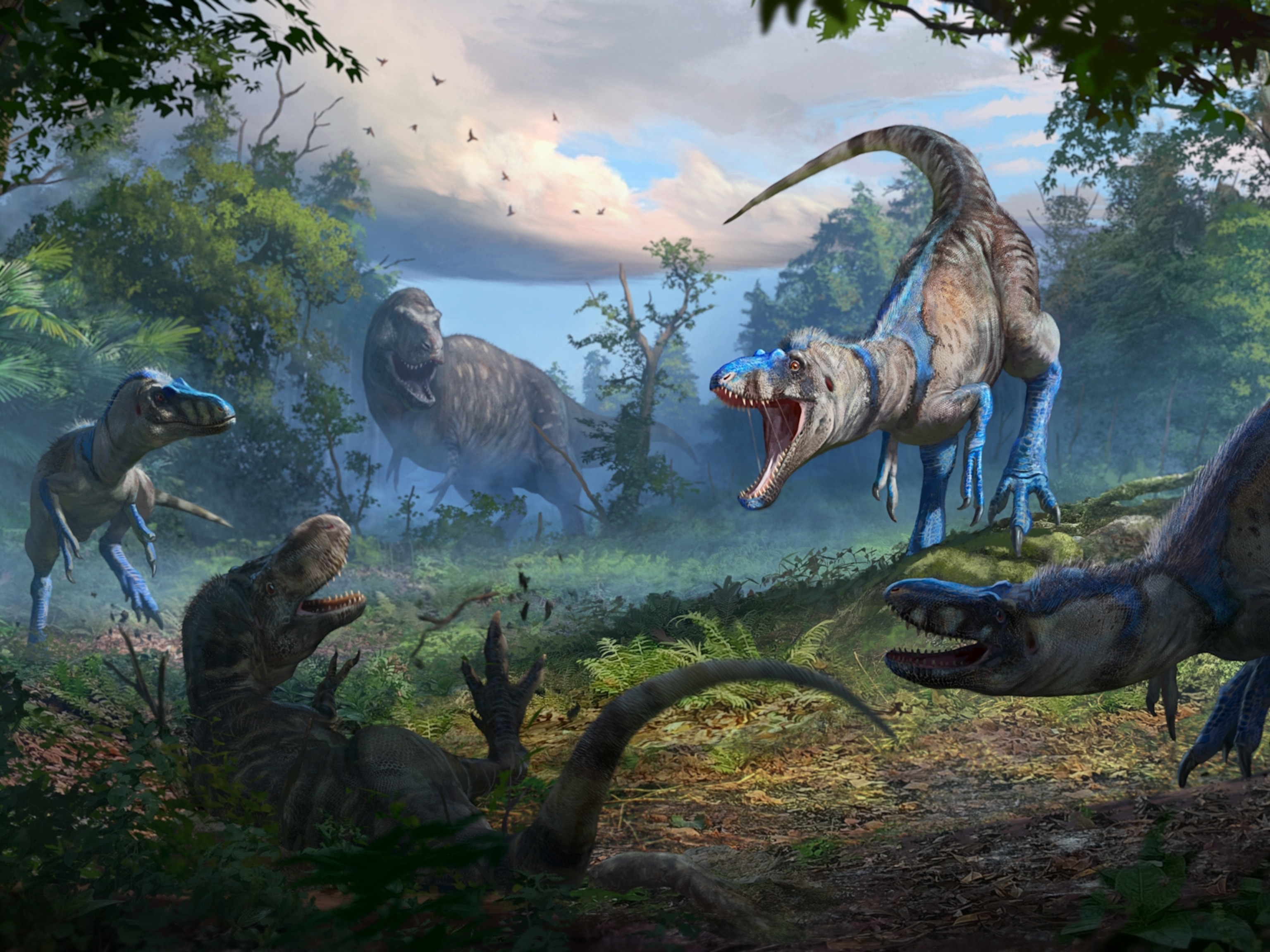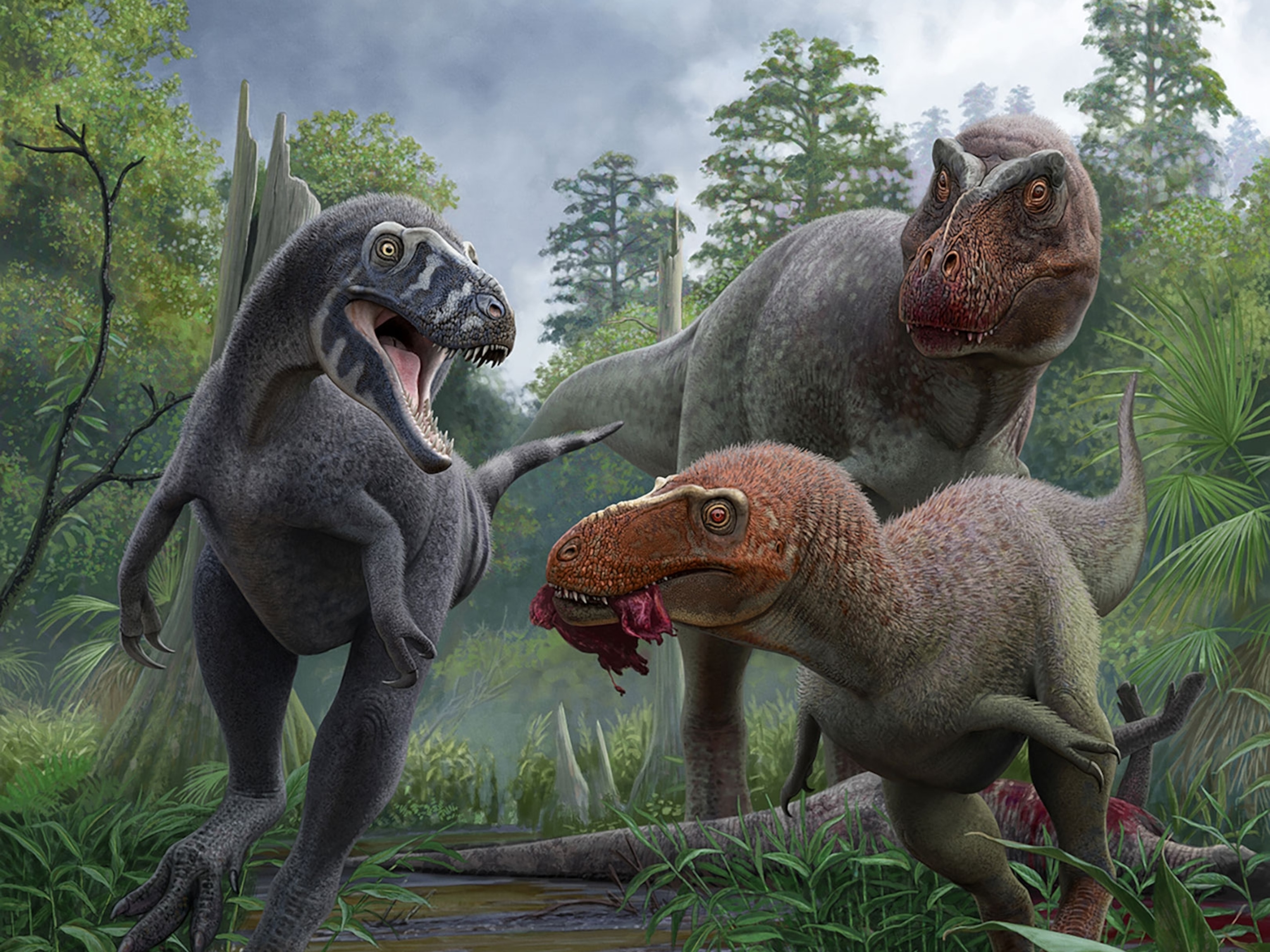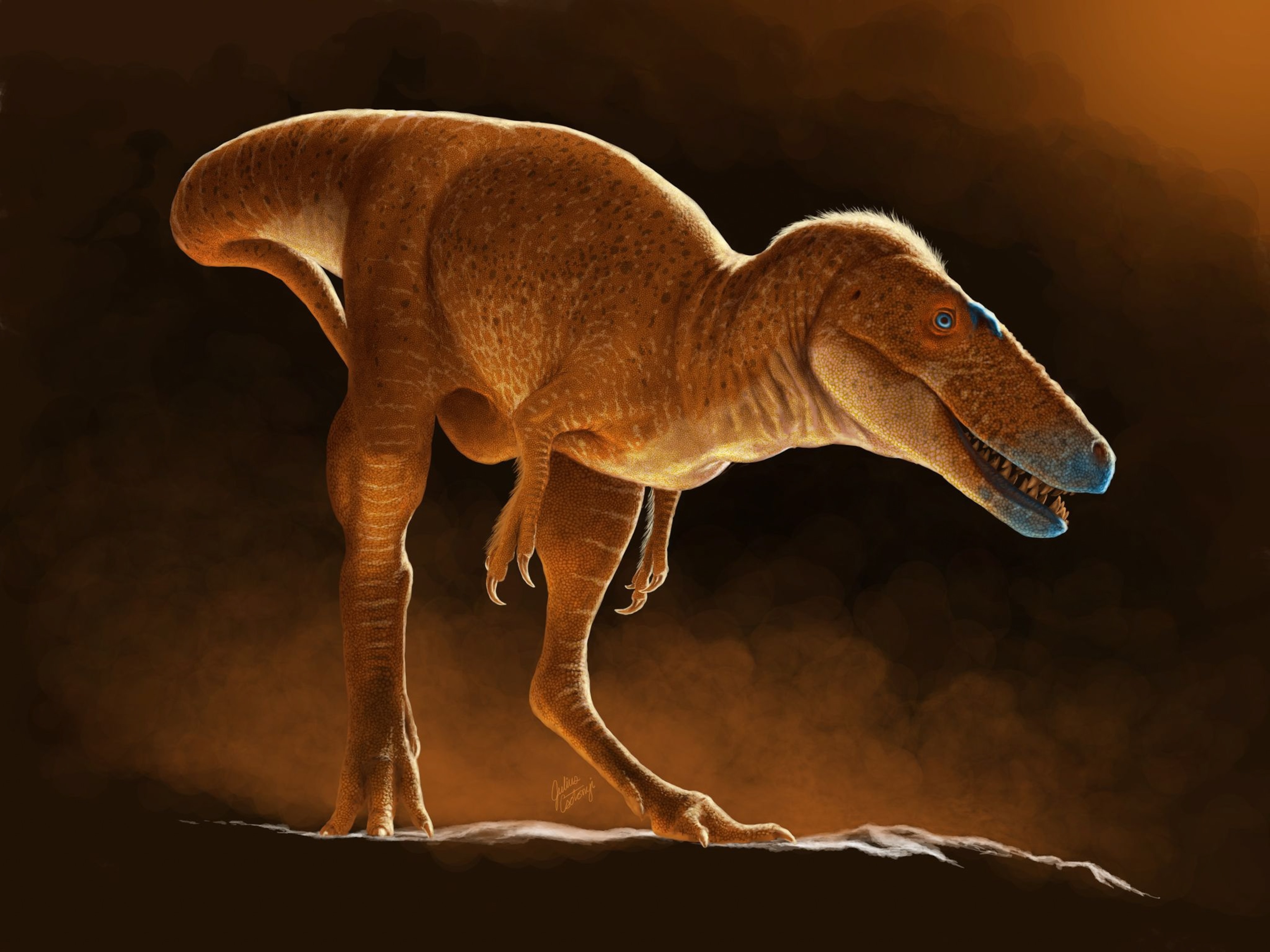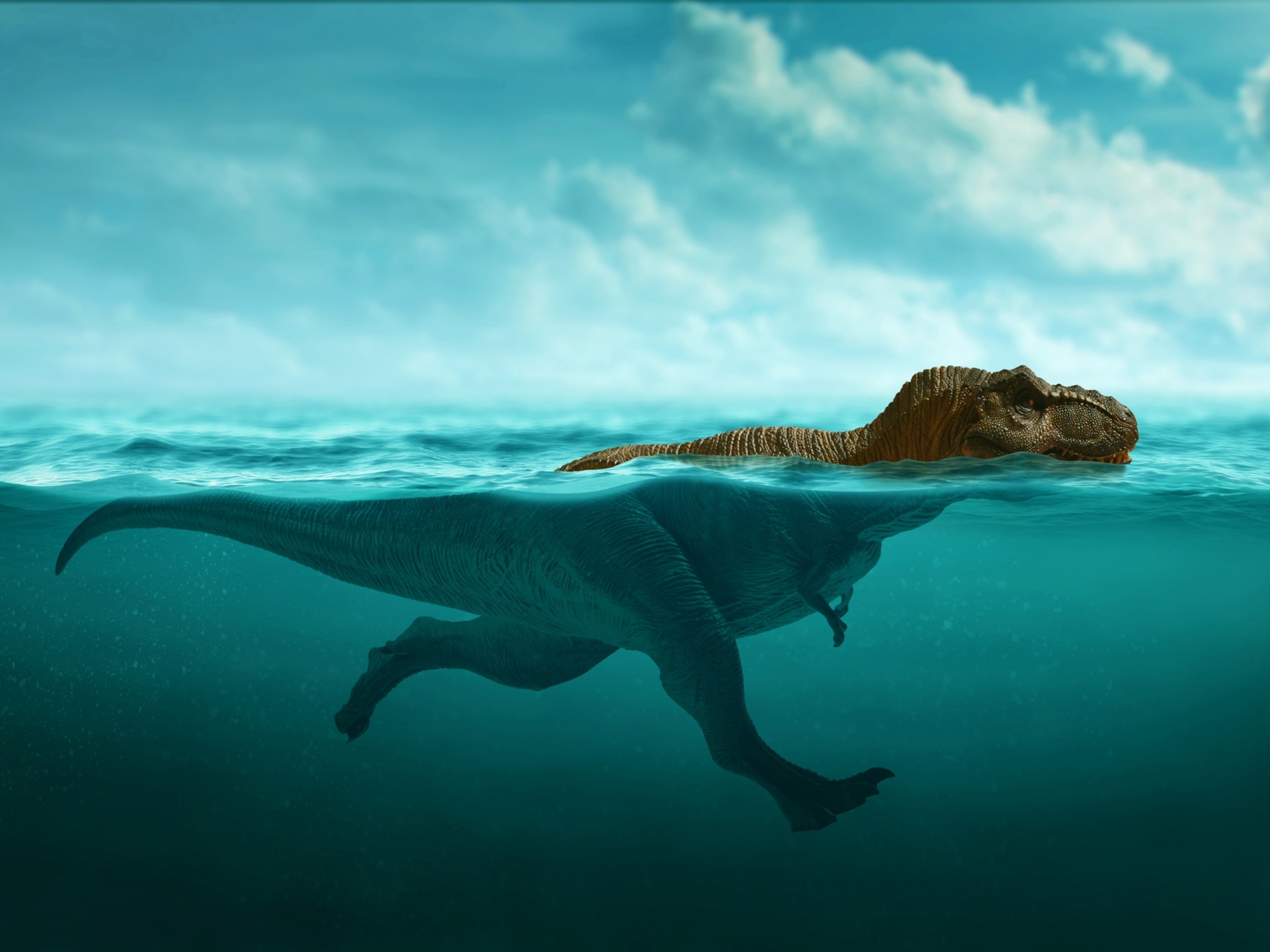
Newly discovered dinosaur had tiny arms like T. rex
The Cretaceous predator, Meraxes gigas, hints that giant carnivores may have had more uses for their comically small forelimbs than previously thought.
About 100 million years ago, a giant predatory dinosaur stalked what is now the Patagonian region of Argentina. Weighing more than four tons and stretching about 36 feet long, the newly discovered carnivore shared several physical traits with Tyrannosaurus rex, including an enormous head and tiny front arms
But the new species, described today in a study published in the journal Current Biology, is not closely related to tyrannosaurs. It belonged to a totally different group of dinosaurs known as the carcharodontosaurids, and it went extinct millions of years before T. rex appeared on the scene. It therefore evolved its tiny arms independently, suggesting that having little forelimbs may have had more evolutionary advantages than previously thought.
“I’m convinced that those proportionally tiny arms had some sort of function,” the new study’s lead author, paleontologist Juan Canale of the National University of Río Negro in Argentina, said in a press release. “They may have used the arms for reproductive behavior such as holding the female during mating or support themselves to stand back up after a break or a fall.”

Discovered in 2012 during field work partially funded by the National Geographic Society, the newly described animal has been named Meraxes gigas in a nod to Meraxes the dragon from George R.R. Martin’s A Song of Ice and Fire fiction series.
The discovery is already helping paleontologists better understand the carcharodontosaurids. This group of dinosaurs, whose name means “shark-toothed lizards,” also contains Giganotosaurus, one of the largest carnivores to ever live and a star of the new movie Jurassic World: Dominion.
“This discovery helps fill in the diversity of this group of dinosaurs and gives us a more accurate picture of evolution and ecology of the time,” says Thomas Carr, a paleontologist at Carthage College in Wisconsin who was not involved with the study. “The actual number of dinosaurs and other extinct animals is probably greatly underestimated, so it's good to add a new species to the family tree.”
Familiar features
Ten years ago, an international team of paleontologists surveying the northern Patagonia region stumbled upon a treasure trove of dinosaur fossils. On their first day of searching, they unearthed the fossilized remains of M. gigas, which included a nearly complete skull, arm, and lower body. The skeleton is now one of the most complete carcharodontosaurids found to date.
It's just a really cool dinosaur with a gargoyle-like head.Peter Makovicky, Paleontologist at the University of Minnesota and National Geographic Explorer
It was once thought that T. rex and other small-armed carnivorous dinosaurs had no use for their forearms, and that’s why the appendages shrank over time. But the study authors say their discovery suggests things are a bit more complex.
According to study co-author Peter Makovicky, a paleontologist at the University of Minnesota and National Geographic Explorer, both species underwent a similar evolutionary change due to the way they hunted. “As their arms got smaller, their heads got larger,” he says. “There was a transference of functions, especially related to prey capture, from the forelimb to the skull.”
Makovicky believes that, as these dinosaurs started using their heads more and their arms less, the limbs shrank. However, he also points out that the arms of these dinosaurs remained muscular, suggesting that they continued to serve some function.
Small arms aren’t the only puzzling feature of M. gigas. Its feet were also tipped with sickle-shaped claws, similar to those wielded by Velociraptors. The researchers also found that the skull of M. gigas was adorned with crests, bumps, and ridges, which they believe the dinosaur used to attract potential mates.
The true functions of these features may never be known. Fossils only reveal so much about how dinosaurs behaved, with paleontologists developing theories by comparing dinosaur anatomy with that of living animals. Without more to go on, experts can only speculate about why M. gigas looked the way it did.
Digging deeper
While many mysteries remain, finds like M. gigas help to create a more complete understanding of the prehistoric world.
“The fossil of M. gigas shows never seen before, complete regions of the skeleton, like the arms and legs, that helped us to understand some evolutionary trends and the anatomy of carcharodontosaurids,” Canale said in the press release.
By scanning the dinosaur’s brain case and taking a closer look at its arm, scientists hope to learn more about how the body of this species compares to that of other carcharodontosaurids. And while each M. gigas bone will be closely scrutinized, the scientists are also taking a minute to appreciate the full wonder of this prehistoric giant.
“I've been doing this for close to 30 years. I've excavated a lot of different things around the world, but this one definitely stands out,” Makovicky says. “Beyond the scientific value, it's just a really cool dinosaur with a gargoyle-like head and huge size.”





